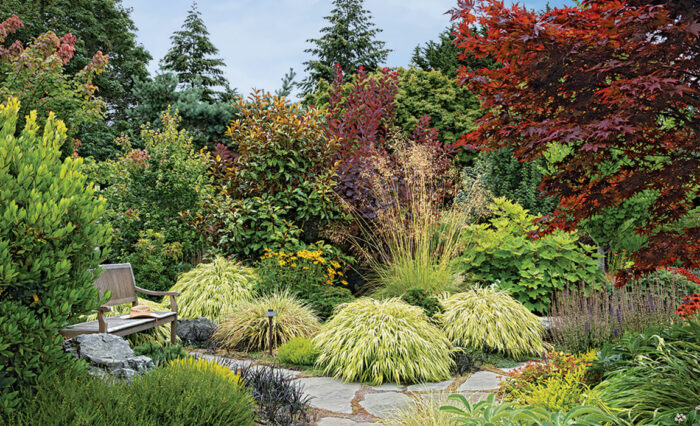
Is there a gardener anywhere who wouldn’t appreciate a beautiful space designed specifically to keep maintenance requirements realistic and manageable? I recently designed such a landscape for a client who wanted to replace her front lawn with a garden where her family of six could play, socialize, and gather with their large circle of relatives and friends. The goal was to strike a balance between beauty and ease of care, since she wanted to maintain the space without hiring outside help. The design we came up with is an excellent example of a hardworking landscape that looks great but does not require hours of labor or a crew of landscapers to keep it that way. As a bonus, the new garden requires about half the water that the turfgrass did.
Remove the lawn, but keep it family friendly
The key to creating a low-maintenance yet visually appealing garden lies in careful planning and thoughtful design choices. In this case it was important to create spaces that are easily navigated by people of all ages, with areas to gather as a group and a few hidden sanctuaries where individual family members can retreat to rejuvenate from their busy lives.
The head of the turnaround driveway was widened to accommodate the width of a game court. Although it is shy of any regulation sizes, the space is large enough to play some competitive pickleball, and when the net is stashed away the area doubles as parking space. We also created a sizable terrace next to the home’s main entrance that is used for family meals, entertaining, and as a spectator area for regular evening racquet games.
A Playful, Water-Wise Retreat
A bland landscape is transformed with layers of colorful, carefree plants and functional open spaces.
Conditions
Zone 8 in coastal Washington; full sun, well-drained soil amended generously with organic matter; western exposure
Challenges
Optimizing circulation areas; minimizing maintenance
Care
Garden beds are irrigated on an as-needed basis; new plants are watered a bit more during their first summer to help them get established. Annual maintenance includes some spring cleanup and a cutback of perennials and grasses in fall.
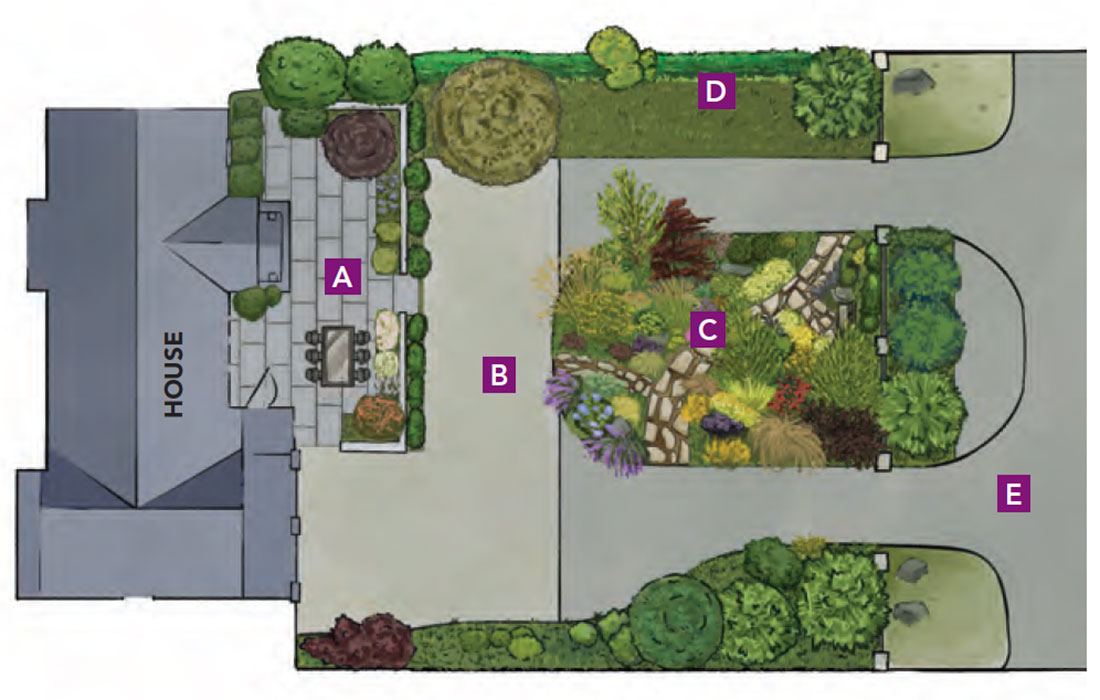
- Bluestone terrace enclosing the home’s main entrance
- Parking area and pickleball court
- Garden bed with footpaths and private seating area
- Perimeter plantings and privacy hedge
- Driveway
Inside the loop of the turnaround driveway, the existing lawn was replaced with a resilient mix of plants that provide a stunning array of textures, colors, and forms in every season. Subtle grade changes and strategically placed boulders anchor the garden and give it a more natural look. A winding path invites exploration and leads to a secluded seating area that is perfect for relaxing away from the crowd.

For the garden beds, we focused on selecting plant varieties that are appropriate for the local climate and soil conditions. We included many native plants that are tough, resistant to pests and diseases, and well-suited to the available sunlight and water resources of the site. We mixed in plants that are native to regions with similar growing conditions to our area of the Pacific Northwest, which is often described as having a Mediterranean climate.
Winding through the garden are wide paths marked with large, level stones to walk on. A tight, low-growing ground cover fills in between and around the stones. Brass buttons (Leptinella potentillina, Zones 4–10) is perfect for this purpose, as it is drought resistant and creates a perfect carpet for walking on. The addition of a few large boulders within the garden ties it in with the natural Pacific Northwest landscape. Some of the boulders create berms that enhance the topography and make the garden seem larger and more interesting.
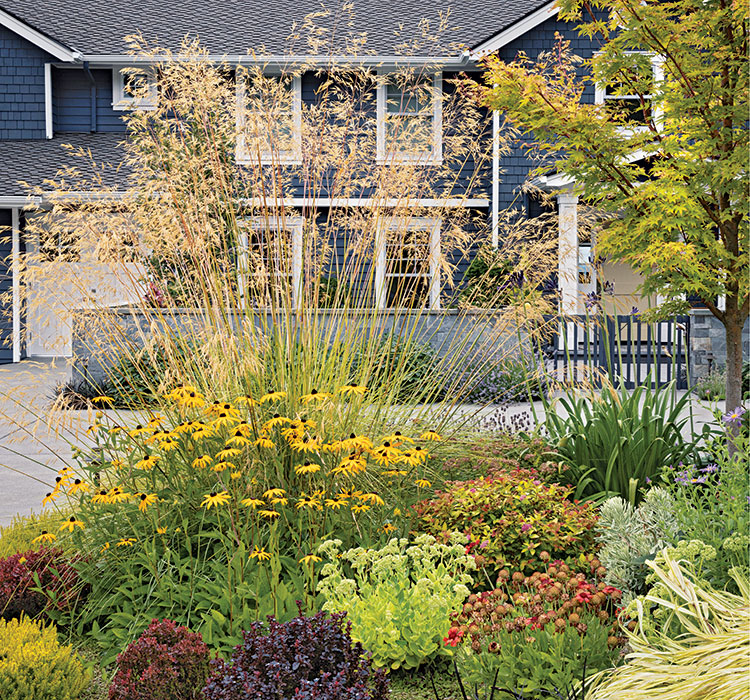
Screening and a coordinated color theme create the sense of a personal retreat
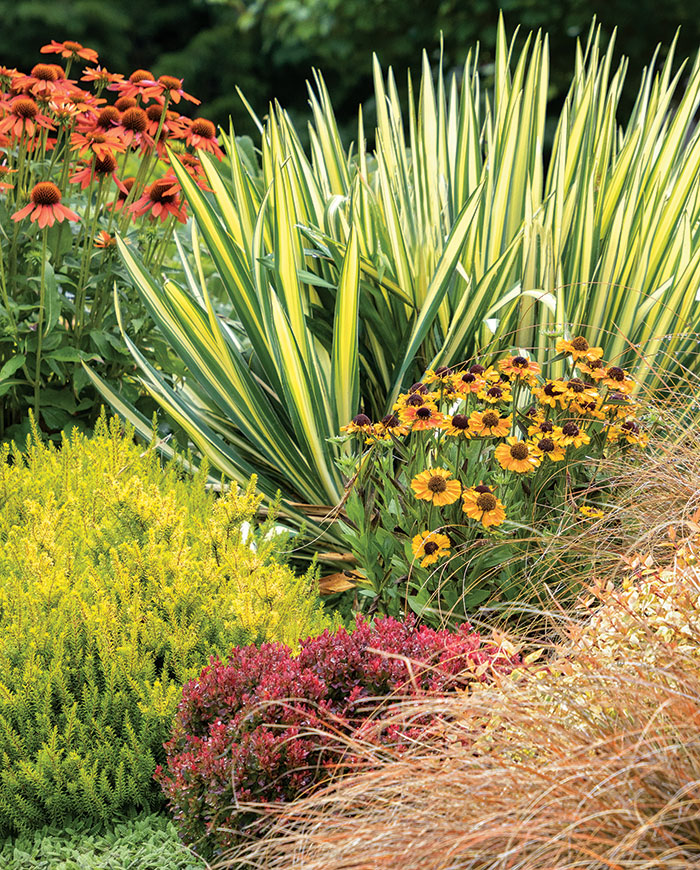
The client requested an area that was set apart from the house and the rest of the garden, a hidden getaway for contemplation and relaxation. Using plants that work as screens was a natural solution for making the space feel visually separate but not completely hidden from other areas of the garden.
There are many plants that can be used to create a subtle veil of privacy. My favorite evergreen for this purpose is giant feather grass (Stipa gigantea, Zones 7–10). Other plants that work well are tall verbena (Verbena bonariensis, Zones 7–9), meadow rue (Thalictrum rochebrunianum, Zones 3–8), and tall ornamental grasses of all kinds.
We also wanted this garden to serve as a colorful foil for the dark blue house, so we incorporated plants with blue and purple blooms and complementary yellow and orange hues. We chose plants that would stagger their bloom times to create a constant display of color from early spring through late fall.
Hard edges are softened with plants
Plants cascade over the edges of the parking area and driveway, softening the hard lines so that the eye will pause on plant compositions instead of the hardscape. Adding silver- and gray-colored plants along this driveway border helped to blend the edges nicely.
Drought-tolerant plants that work well for this purpose are lavender varieties such as ‘Hidcote’ and ‘Munsted’ (Lavendula angustifolia cvs., Zones 4–10), and ‘Silver Knight’ heather (Calluna vulgaris ‘Silver Knight’, Zones 5–8). For a long season of continuous color—from June through October—a stunning choice is Rozanne geranium (Geranium ‘Gerwat’, Zones 5–8), with its reddish-purple flowers and mounding deep green foliage that is slightly marbled with chartreuse tips.
This garden is a testament to the idea that resilience and natural beauty can be achieved without the burdensome weight of constant maintenance. As it flourishes, it also contributes to the delicate balance of the surrounding ecosystem, using about half the water needed to maintain a lawn. Consuming fewer resources is always the way to go.
A water-wise landscape doesn’t need to look like a desert
Monotonous, high-maintenance turfgrass was removed to make way for a bounty of trees, shrubs, and perennials. The plants look lush, but they require relatively little care and much less water than the lawn. Here are some of the other key details that make this design work.
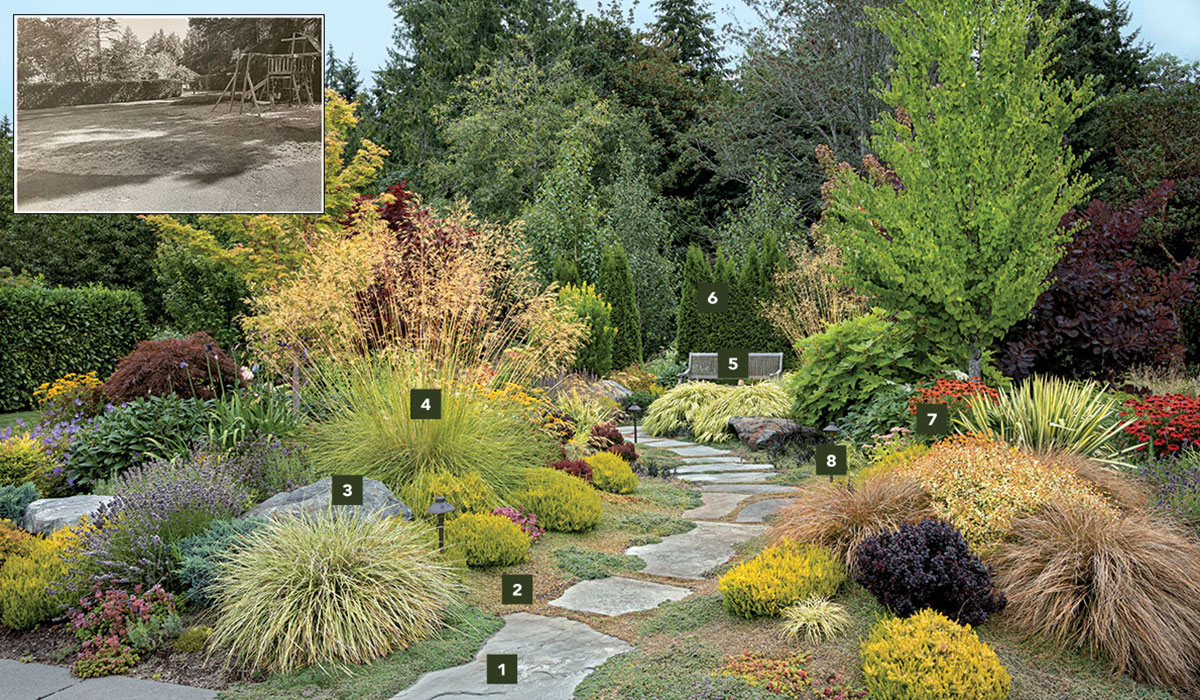
1. A footpath invites exploration
In addition to providing easy access for seasonal tasks, the pathway allows visitors to immerse themselves in the garden.
2. Ground covers flow around the stepping stones
Bringing a ground-hugging layer right up to the edge of the footpath adds a touch of softness and naturalistic charm.
3. Boulders anchor the composition
The large rocks nestled in the landscape give this garden a sense of place, tying it to the nearby mountains of the Pacific Northwest.
4. Translucent layers screen the seating area
Tall grasses and small trees gently enclose the center of the bed without completely blocking views to the rest of the garden.
5. A secluded destination beckons
A comfortable bench set off to the side of the pathway has become a favorite escape for the busy mother who maintains this garden.
6. Denser layers provide privacy
Strategically placed evergreen hedging is an attractive backdrop for the seating area, and it blocks views into the garden from the nearby street.
7. Color is an important element
A coordinated palette ties the space together, with an emphasis on warm, cheerful hues grounded by deep burgundies, sultry reds, and tawny tans.
8. Lighting keeps the garden accessible at night
Along the pathway, unobtrusive fixtures cast light downward to guide the way without creating excessive light pollution.
Stacie Crooks is a Seattle-based garden designer and educator who has created gardens throughout the Pacific Northwest.
Photos, except where noted: doreenwynja.com
Fine Gardening Recommended Products

SHOWA Atlas 370B Nitrile Palm Coating Gloves, Black, Medium (Pack of 12 Pairs)
Fine Gardening receives a commission for items purchased through links on this site, including Amazon Associates and other affiliate advertising programs.

Gardener's Log Book from NYBG
Fine Gardening receives a commission for items purchased through links on this site, including Amazon Associates and other affiliate advertising programs.

Ho-Mi Digger - Korean Triangle Blade
Fine Gardening receives a commission for items purchased through links on this site, including Amazon Associates and other affiliate advertising programs.

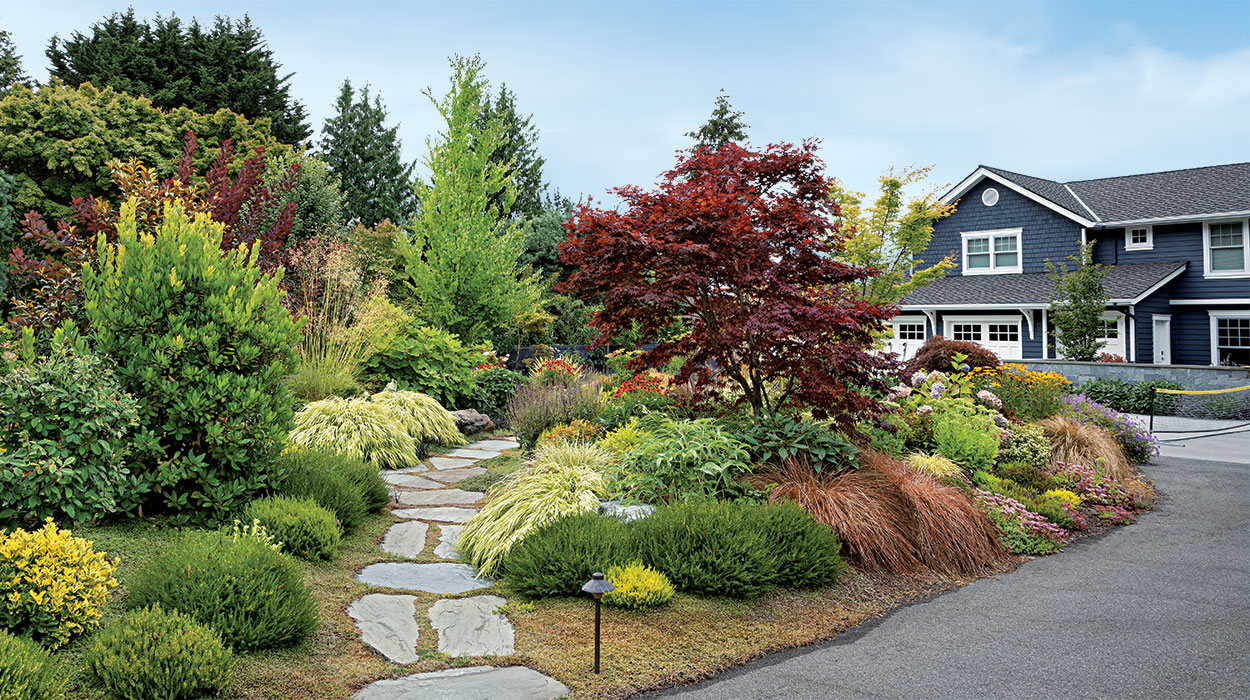
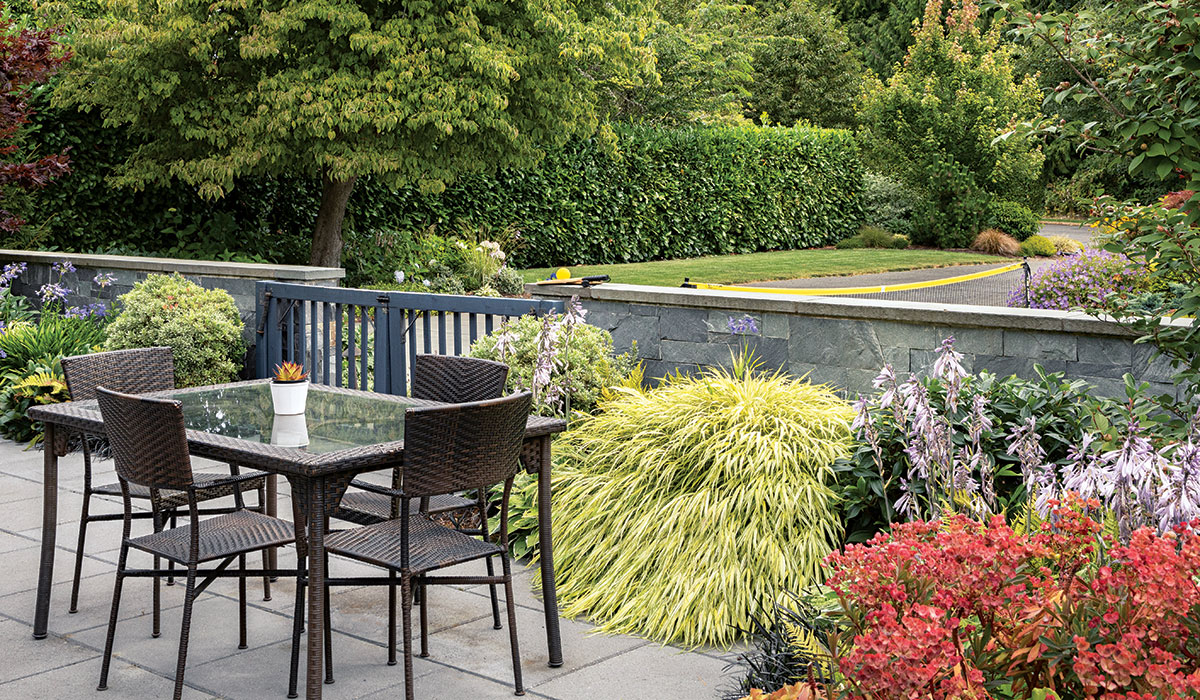
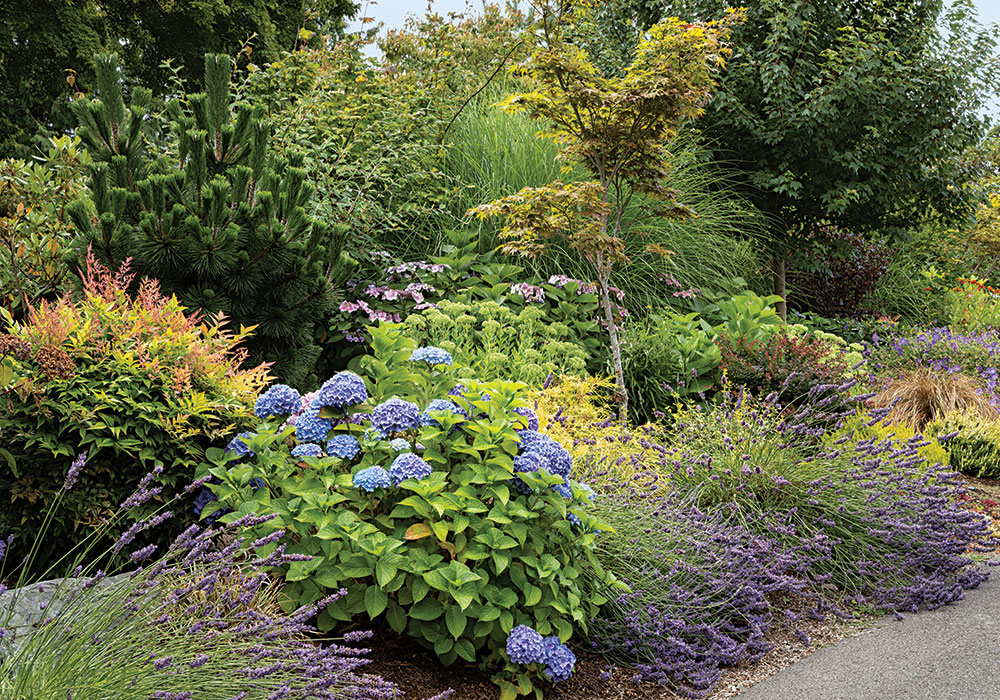



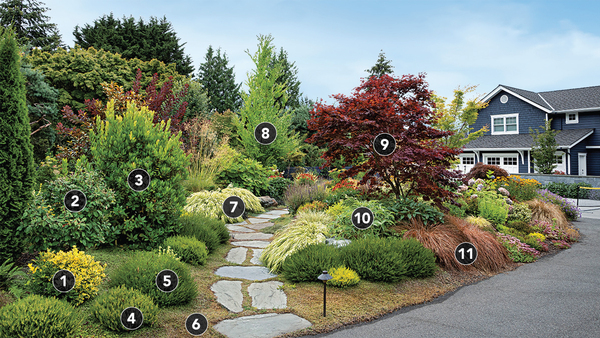













Comments
I love the colors, pathways, nooks and crannies for seating and recreation. Great use of space and plants. Gorgeously done.
Log in or create an account to post a comment.
Sign up Log in